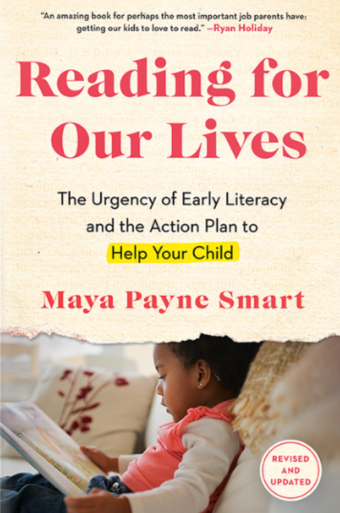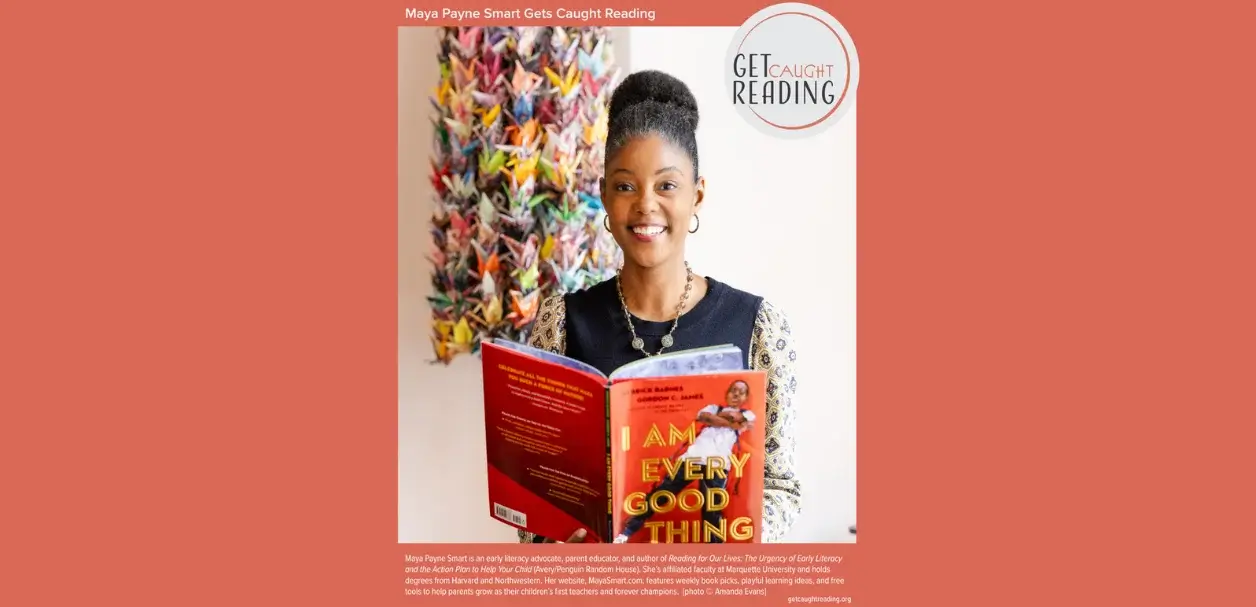Years ago, when I was first introduced to the science of reading, I began to question a lot of the feel-good messaging that often accompanies literacy campaigns. You’ve probably seen the slogans: “Let kids catch you reading!” or “Be a reading role model!” The idea was that seeing adults read could somehow spark literacy in children.
I’d come to understand that kids don’t learn to read just by watching someone else do it—or even by being read to regularly. Instead, most need direct, explicit, systematic phonics instruction to become independent readers. So, in my own work, I chose to focus more on the nuts and bolts of building reading brains through rich conversation and direct instruction, and less on more symbolic-feeling gestures.
That’s why I was surprised—and a little conflicted—when Carl Lennertz, the director of the Children’s Book Council, invited me to be featured in their year-round “Get Caught Reading” campaign. Maybe you’ve seen the posters: authors, artists, athletes, and musicians photographed with one of their favorite books. They’re displayed in classrooms, libraries, and community centers all over the country.

I was honored to be asked—but I had to pause and think: Was this in line with my message that kids need us to teach reading, not merely model it?
In the end, I said yes. Here’s why.
Today’s kids are growing up in a sea of screens. Many of us are reading less. Plus, while many of us are still reading, we’re doing it on our phones and tablets. To a child, it’s not always clear whether we’re deep into a novel or just scrolling through social media. So it feels more urgent than a decade ago that children see adults holding physical books and turning real pages, showing another generation that reading matters, delights, and connects us.
It’s impossible to measure the impact of seeing someone you know, admire, or are simply curious about reading a book. But moments like that stick. Think of the viral headlines when NBA stars are spotted reading on the sidelines—how those images ripple through media and culture, expanding visions of what reading can look like.
I’ve seen that same dynamic play out in quieter ways, too. At a storytime I led, one boy volunteered to read aloud to the class. Then, one by one, four more boys followed—some sounding out words, others narrating pictures—but all newly emboldened by seeing someone like them take a turn in the reader’s seat. These moments, big and small, accumulate. And over time, they help a child begin to believe: books are for me, too.
Plus, as a book lover, I couldn’t turn down a chance to spotlight a book I love and want more people to discover. I chose I Am Every Good Thing by Derek Barnes, illustrated by Gordon C. James—a powerful, affirming picture book that celebrates the creativity, resilience, and brilliance of black boys. I’m a girl mom, but this book speaks to everyone about worth and possibility. The voice of the boy narrator—bold, proud, and full of life—moves me every time I read it.
Ultimately, the campaign reminded me that literacy happens in community. A poster alone won’t teach a child to read. But it might spark a conversation, a connection, or a curiosity that inspires more reading. It might nudge someone to pick up a book they wouldn’t have otherwise. And in a world where literacy needs all the momentum we can give it, I’m proud to add this image to the mix.
You can check out my poster and others at GetCaughtReading.org. Think of it as one small but joyful way we can keep books visible, keep (or make) reading “cool,” and keep nurturing the next generation of lifelong readers.
Let’s read—and be seen reading.
Get Reading for Our Lives: The Urgency of Early Literacy and the Action Plan to Help Your Child
Learn how to foster your child’s pre-reading and reading skills easily, affordably, and playfully in the time you’re already spending together.
Get Reading for Our Lives

